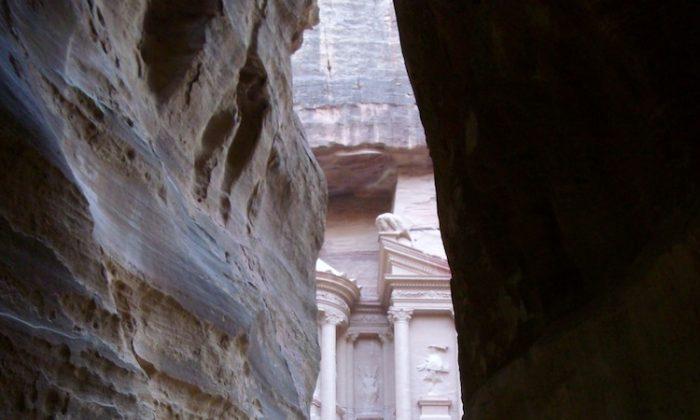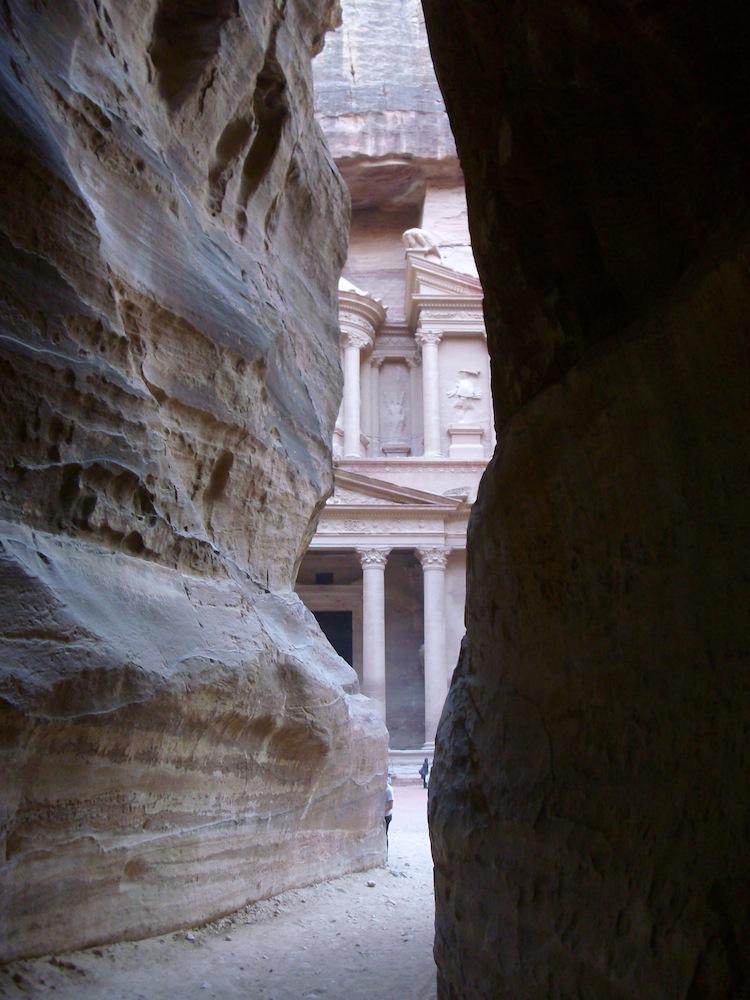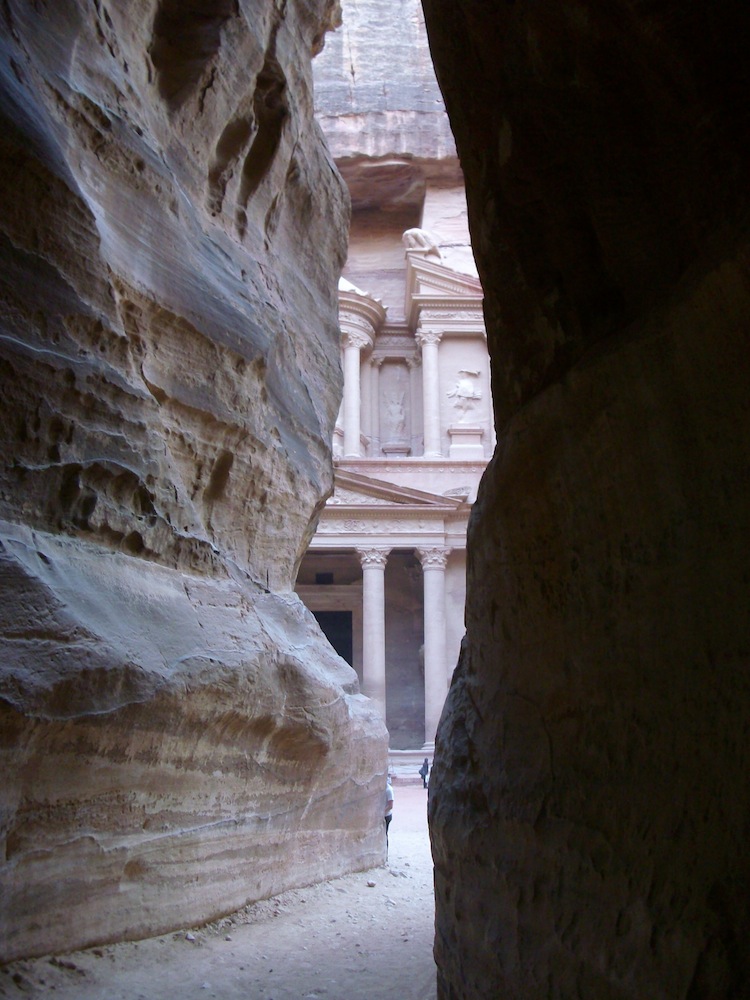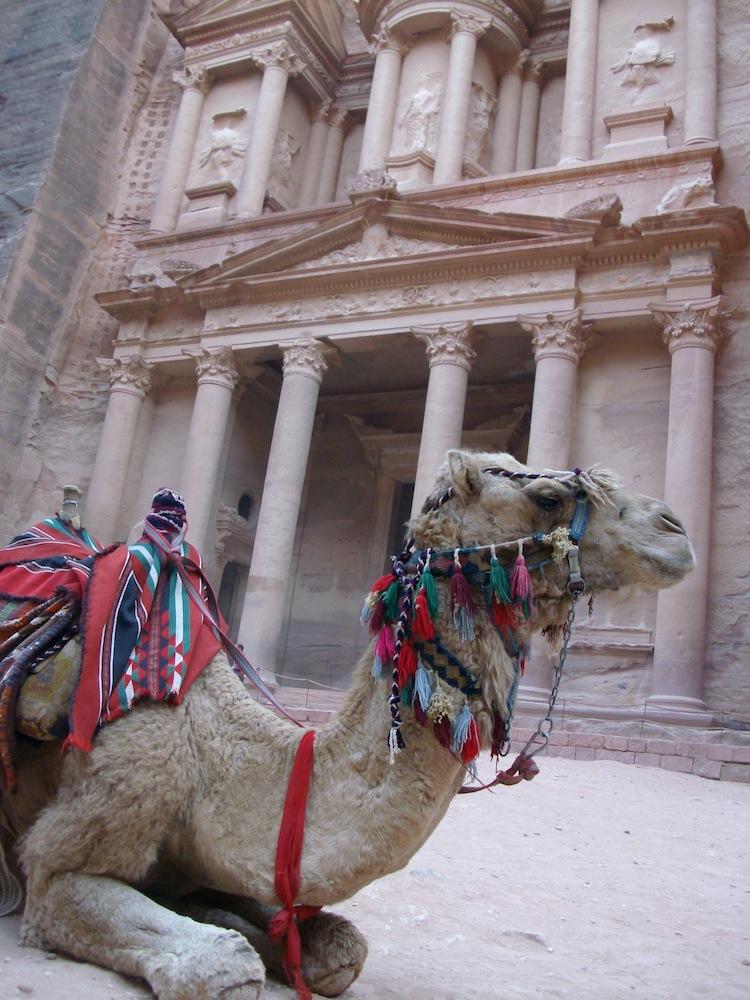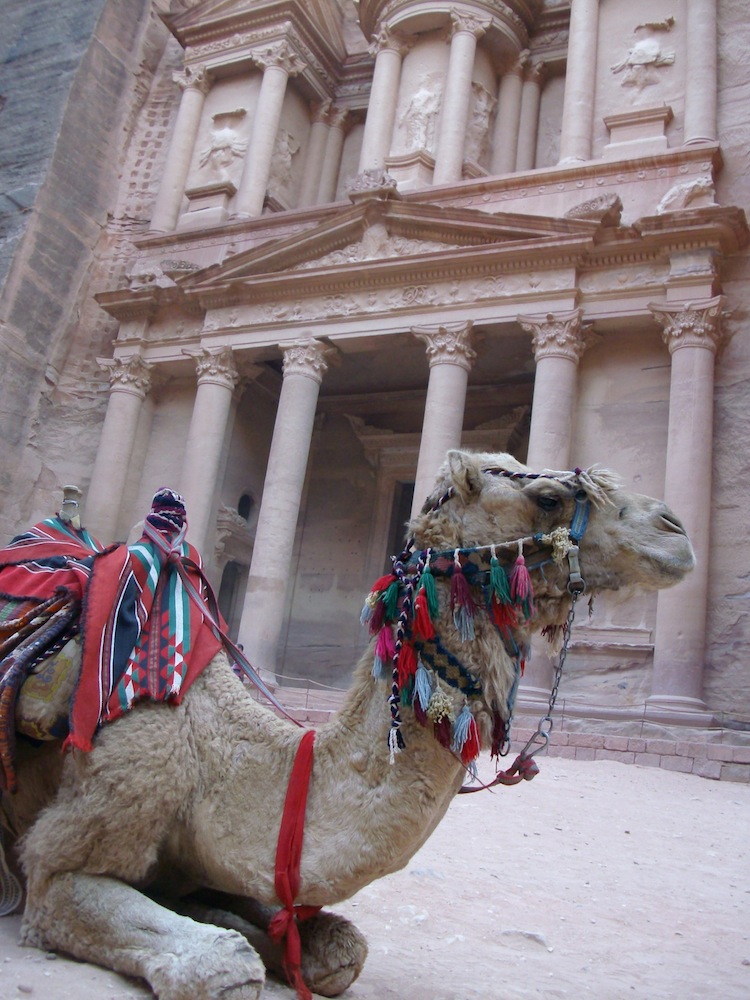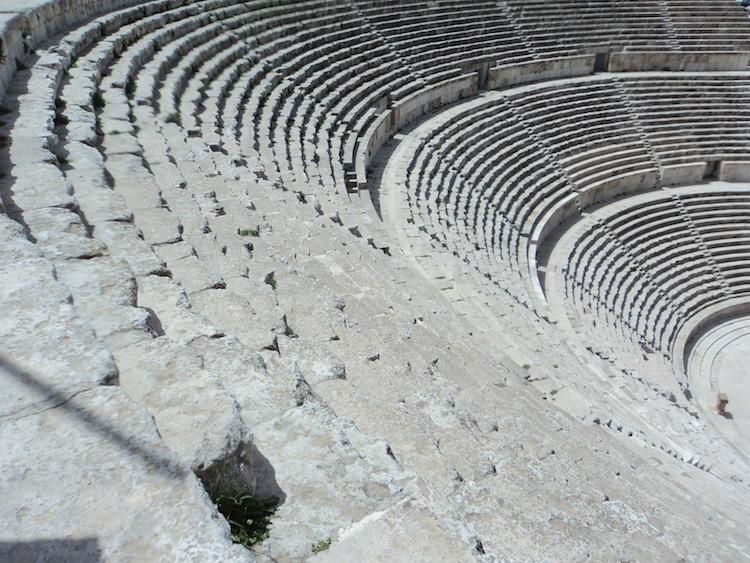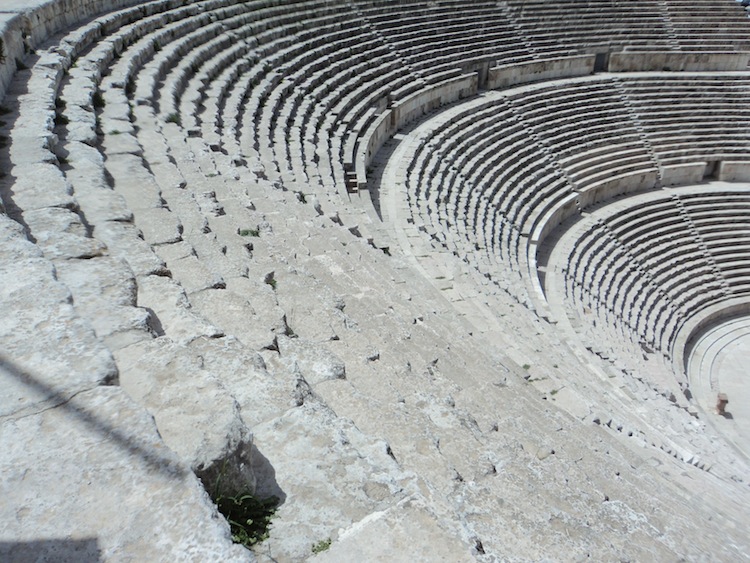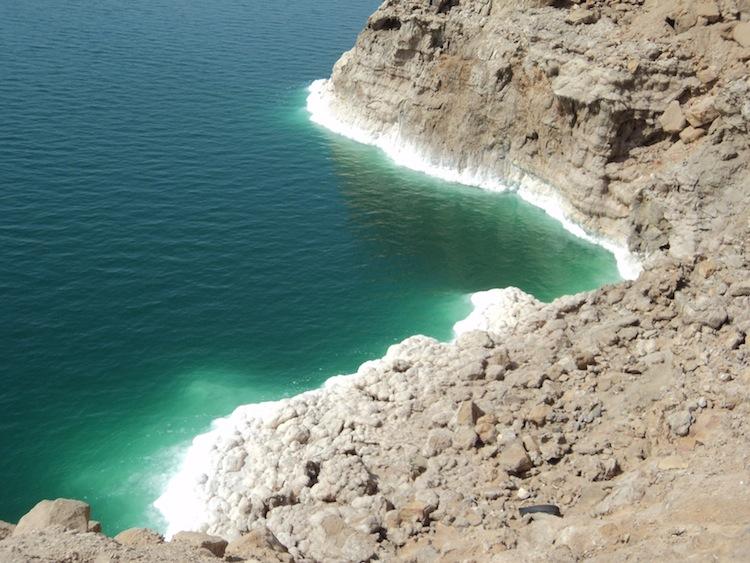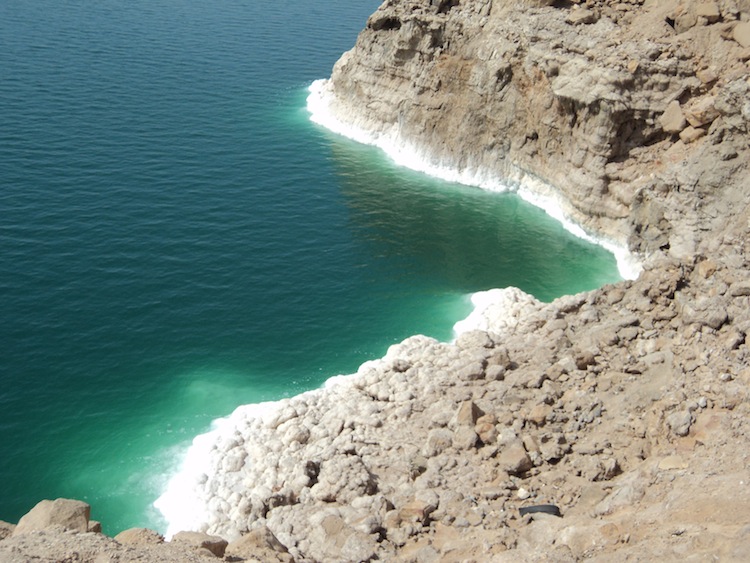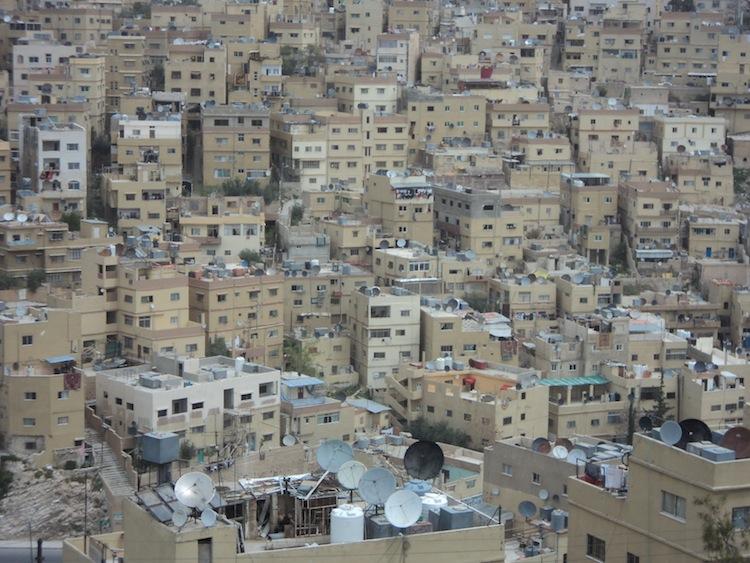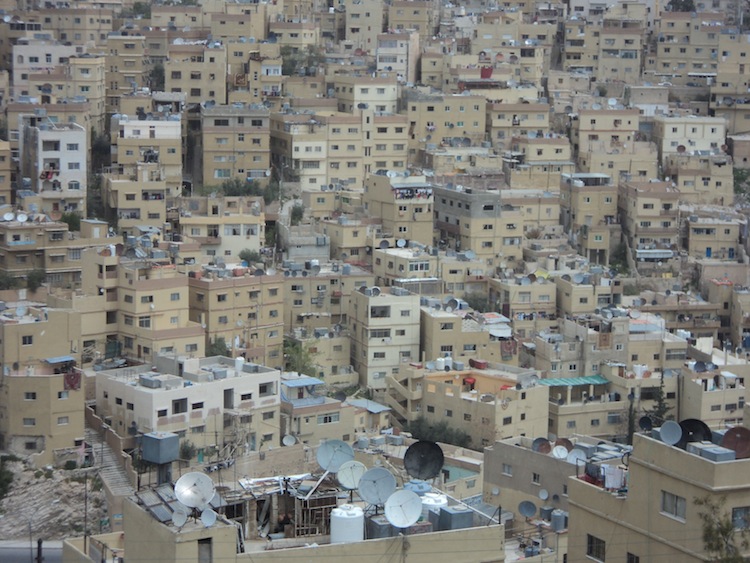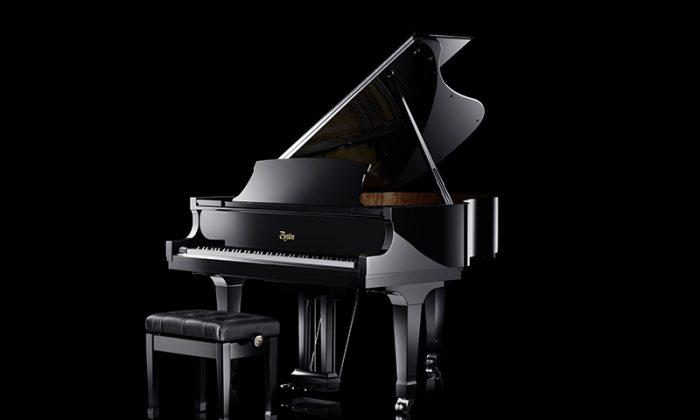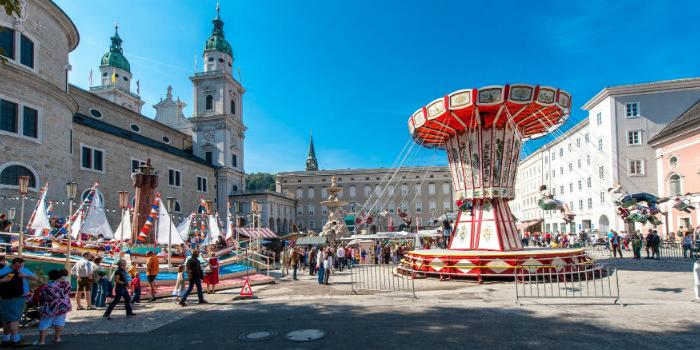A young Bedouin boy peered out from the dark cavernous entrance of the Monastery before helping me onto the uneven lip of the vast entrance. He beckoned me towards a small fresco on the far wall where a barely visible painting of a cross on the sandstone was slowly being consumed by modern-day murals and graffiti. The Bedouin boy proudly blurted “2,000 years old” before ushering me out along a path towards a rocky outcrop and the mountainous landscape of Wadi Araba. Stretching as far as the eye could see, the scene framed a biblical image.
The trail up to the summit of the High Place of Sacrifice is another wonder of geology. Petra can be seen from a bird’s eye view, looking down upon the 6,000-seat theatre that was hewn into sheer rock by the industrious and ancient Arabian people.
Once a city of 30,000 people, the 10-kilometre-square complex can take days to comprehensively explore, yet most travellers have one day to navigate the area. In 1812 Burckhardt had only 24 hours in Petra, surreptitiously making detailed maps and etchings, which he sent back to the Royal Geographic Society in London. With this in mind, I made sure that I walked until dusk, conquering the many significant sites before retracing my steps to admire the earlier scenes in the changing light of day.
The Dead Sea
After hiking across an almost lunar landscape of sand and dust while among Petra’s statuesque stone titans, I crossed the Wadi Araba mountain range and plunged down into a cauldron of heat into an area mainly devoid of plant and animal life. Following the shimmering heat on the tarmac roads, passing Bedouin tents, I reached the waterline. The Dead Sea is ringed by a heavy precipitation of salt along the coast, causing a luminescent halo below the waterline and accentuating the turquoise colour of the sea.
“Welcome to the lowest point on Earth” the glass sign declared, perched next to the Dead Sea within the immaculate surroundings of the Kempinski Ishtar Dead Sea Resort & Spa. At over 400 metres below sea level, the sea water is rich with more than 21 different minerals; the air is 15 per cent more oxygenated and even the suns UV rays are filtered, claims the sign.
At the waterside, bathers were grouped around troughs full of mud and were applying the dark oily substance to one another. Others bobbed around in the sea like corks, delighted at being able to float effortlessly on the surface.
I first watched and then followed the routine of bathers on the beach, which was to immerse oneself for 10 minutes in the magnesium-rich water, then apply a thick coat of Dead Sea mud on all exposed areas of skin, before finally washing the dried mud off with another swim in the salty water.
For millennia, the mineral-rich black mud and the thermal springs that flow into the sea have always been regarded as nature’s pharmacy. It is believed that Cleopatra came here to bathe, as did countless others who were seduced by this unique body of water that is both relaxing and full of curative properties.
The Capital Amman
After two revitalising days relaxing at the Dead Sea, the energy of the city beckoned. A mere 40-minute drive from the Dead Sea is Jordan’s capital Amman. At my starting point, The Citadel, Roman columns were juxtaposed against a patchwork of homes in downtown Amman that creep across one of the city’s many Jabals (hills) like sandstone lava.
In all the higgledy-piggledy disordered mass of urbanisation there is a beautiful equipoise – especially through the lens of a camera. The archaeological museum has many treasures, which are displayed with an old-fashioned feel. Most are under simple glass counters, with ancient statues placed next to the priceless exhibits as though on guard.
The rather timeless air of the museum is mirrored by parts of Amman, especially the Balad (old town), a typical Arab marketplace full of colours, aromas, and noises offering a beguiling place in which to stroll. Overlooking the busy throng of daily life is a Roman Amphitheatre, built between 138 and 161 AD by the Roman Emperor Antonius Pius. Its sublime acoustics are used for cultural events to this day.
A drive out of the melting pot of the Balad takes you into modern Amman, which is rising upwards with skyscrapers and large hotels. The Kempinski Hotel in the Shmeisani district is designed with large windows and glass lifts to bring views of the cityscape into as much of the hotel as possible.
In between the old Amman and the modern growth of the capital lies a small bohemian enclave centred around Rainbow Street. Commanding some of the best vistas across the downtown area, a bar and café society has developed, which is a big draw for the student population – many of whom can be found at Books@cafe, a place where the literati can exchange ideas and glances.

